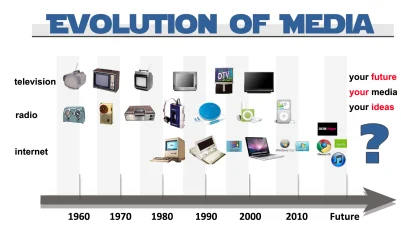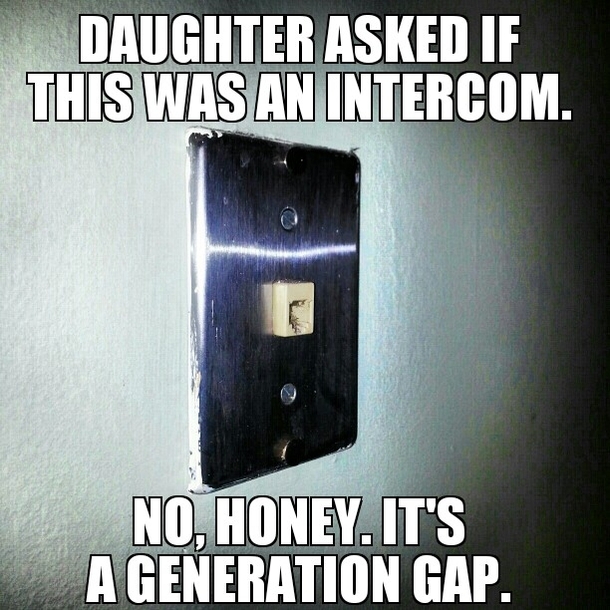The Evolution of Media Lauren Lemelin

The evolution media has played an influential role in the development of our nation. From the invention of the printing press to social media platforms, mass media has connected and informed people for decades. I interviewed my uncle, K. Lemelin, on his experience with media and media technology from when he was my age, twenty years old, to now, fifty-seven years old. The interview was very insightful as we conversed about his experiences while working through many generation gaps that surfaced. In the interview Lemelin stressed the popularity of the newspaper, the AM/FM radio, and the television during his adolescent and young adult years.
 The invention of print media created changed the world as it allowed distant audiences to access other’s ideas, stories, and information (Fuchs, 2017). Newspaper was arguably the most popular form of media during Lemelin's first twenty-five years of' life. Lemelin discussed how the newspaper was delivered every morning and afternoon. The morning newspaper was printed around 11pm and the afternoon paper was printed around 11am; anything that happened overnight or before 11am was published in the following edition. Therefore, there was an apparent informational gap between the two delivery times. Lemelin stated that the newspaper’s primary purpose was to inform people of local and world news events. Most American's relied on the newspaper to get detailed news coverage as it went more in-depth than the radio and television broadcasts. In addition, the newspaper also had a cartoon and activities section which was occasionally used for entertainment or to pass time. The interview made me realize how the spread of news is drastically different today. With the invention of 24/7 news coverage, newspaper readership has significantly decreased and the afternoon newspaper has been eliminated. Another difference is that there were hundreds of newspaper companies publishing content, but as the demand decreased many companies were forced to shut down which has led to less individualized articles in local newspapers. Lemelin shared this article with me, it shows how newspaper chain, McClatchy, a chain focused on local newspaper companies, has been forced to shut down due to bankruptcy (click here). In the interview Lemelin discussed this column (click here); the column shows a reader's feelings toward a change made in the Roanoke Times. Lemelin also expressed frustration with the changes as he thinks the newspaper should appeal to the interests of the local consumers. This attitude suggests that Lemelin views the newspaper as a commercial mandate as he is paying for the service and believes their goal should be to please him, the profitable consumer.
The invention of print media created changed the world as it allowed distant audiences to access other’s ideas, stories, and information (Fuchs, 2017). Newspaper was arguably the most popular form of media during Lemelin's first twenty-five years of' life. Lemelin discussed how the newspaper was delivered every morning and afternoon. The morning newspaper was printed around 11pm and the afternoon paper was printed around 11am; anything that happened overnight or before 11am was published in the following edition. Therefore, there was an apparent informational gap between the two delivery times. Lemelin stated that the newspaper’s primary purpose was to inform people of local and world news events. Most American's relied on the newspaper to get detailed news coverage as it went more in-depth than the radio and television broadcasts. In addition, the newspaper also had a cartoon and activities section which was occasionally used for entertainment or to pass time. The interview made me realize how the spread of news is drastically different today. With the invention of 24/7 news coverage, newspaper readership has significantly decreased and the afternoon newspaper has been eliminated. Another difference is that there were hundreds of newspaper companies publishing content, but as the demand decreased many companies were forced to shut down which has led to less individualized articles in local newspapers. Lemelin shared this article with me, it shows how newspaper chain, McClatchy, a chain focused on local newspaper companies, has been forced to shut down due to bankruptcy (click here). In the interview Lemelin discussed this column (click here); the column shows a reader's feelings toward a change made in the Roanoke Times. Lemelin also expressed frustration with the changes as he thinks the newspaper should appeal to the interests of the local consumers. This attitude suggests that Lemelin views the newspaper as a commercial mandate as he is paying for the service and believes their goal should be to please him, the profitable consumer.
Another popular media source that published news twice a day was the television. Lemelin stated that his families television was primarily used to watch the "nightly news." The “nightly news” was a thirty-minute broadcast which aired every night at 6pm and 11pm. Lemelin stated "back then news came in waves, I called it batch news. It wasn't like now where you can find new stories at all times." His families dinner and daily activities were strategically planned around the 6pm broadcast as his father insisted on watching it every night. In addition to his father, many Americans looked forward to these broadcasts at the end of the day as they were informational and entertaining. The “nightly news” still exists today, for example “Nightly News with Lester Holt”, but it is less popular
| Popular news broadcast today. |
| An average TV in the 70s and 80s. |
as 24/7 news coverage allows us to be informed throughout the day. Lemelin also added that 24/7 news coverage has made news broadcasts more opinionated. However, when they only had an hour each today, Lemelin claims that the news coverage was more objective as none of the anchors tried to "choose a side" or express their political orientations.
----------------------------------------------------------------------------------------------------------------
Facts about the television in the 1970s and 1980s:
* The television only had three channels.
* Each channel would show "nightly news" at 6pm and 11pm.
* The television played sports, movies, sitcoms, and soap-operas when the "nightly news" wasn't being broadcasted.
* The television was in black and white.
* There was no option to record, pause, rewind, or fast-forward.
* Overall, it was used to gain information, pass time, or for entertainment.
-----------------------------------------------------------------------------------------------------------------
| Old AM/FM Radio. |
Another media source that Lemelin commonly used during his adolescence and early childhood years was the AM/FM radio. Lemelin stated that the AM/FM radio was his favorite, most frequently used media, and he claimed it was “the best source of continuous entertainment.” During our interview he shared memories of listening to “American Top 40” with his siblings every Sunday morning at 10am. "American Top 40" was a radio broadcast that played America's top forty songs. Click here to listen to the
| An episode recording of a radio broadcast that Lemelin probably listened to. |
August 3rd, 1974 "American Top 40" episode. He also recalled sitting at the kitchen table with the radio listening to baseball and hockey games. In addition, he stated that every radio station would do a brief news broadcast at the end of the hour. Although the FM/AM radio is still around today it is less popular as there are now music streaming services such as Spotify, and other alternative options like XM radio.
Interviewing Lemelin on his experience with media and media technology from when he was a child to now was very insightful and interesting. Our discussion made me realize the drastic differences between “old” media and “new” media.
“Old” Media
|
“New” Media
|
· Regulated
|
· Continuous
|
· Simplistic
|
· Available 24/7
|
· Less Engaging
|
· Time Consuming
|
· Less Time Consuming
|
· Engaging
|
I understand “old” media as simplistic as it was slower, less engaging, less time-consuming, and traditional. One of the main differences that I realized was that “new” media is widespread and constantly used versus “old” media which could only be consumed at select hours of the day. In the interview Lemelin discussed his current media consumption and compared it to his media consumption when he was twenty years old. There was approximately a five hour difference between the two; he currently spends about six hours a day using media and estimated that he used it for maybe an hour a day when he was my age.
| Old landline telephone. |
communicate via telephone. I think being in a long distance relationship, like he was, made me realize the significant differences in “old” media telephones and “new” media cell-phones. Lastly, the evolution of media has been drastic. Media has evolved from a mass media model with one sender and many recipients, to a participatory culture model with many senders and many recipients. "Old" media, a consumer culture, didn't encourage the involvement of users, audiences, consumers, and fans in the creation of culture and content, but "new" media, a participatory culture does. My interview with Lemelin confirms that the models of media are significantly different today than when he was my age.
References
No comments:
Post a Comment
Note: Only a member of this blog may post a comment.